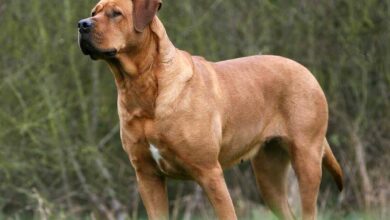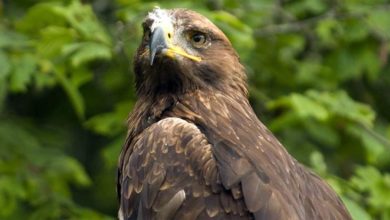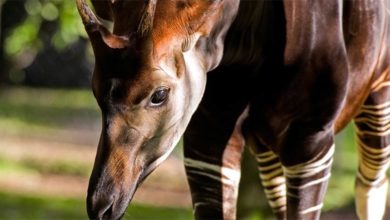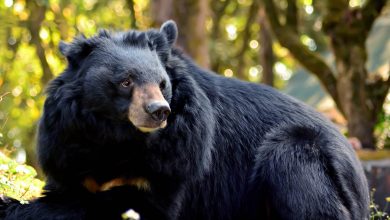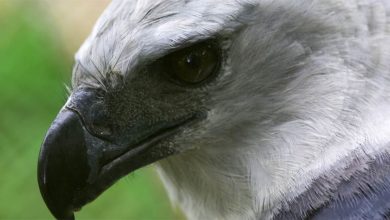English Greyhound
Sighthounds are extremely fast dogs. The fastest among them are Greyhounds. These dogs develop a speed similar to a cheetah and their skills are used in numerous competitions, especially races. Although lively on the track and very durable, they are delicate in nature and require a lot of attention from the owner. Let’s meet sprinters among dogs – charming Greyhounds.
FCI classification
- Group 10 Sighthounds
- Section 3 Short-haired sighthounds
- Without working trial
- Other names: English Greyhound
- Origin: Great Britain
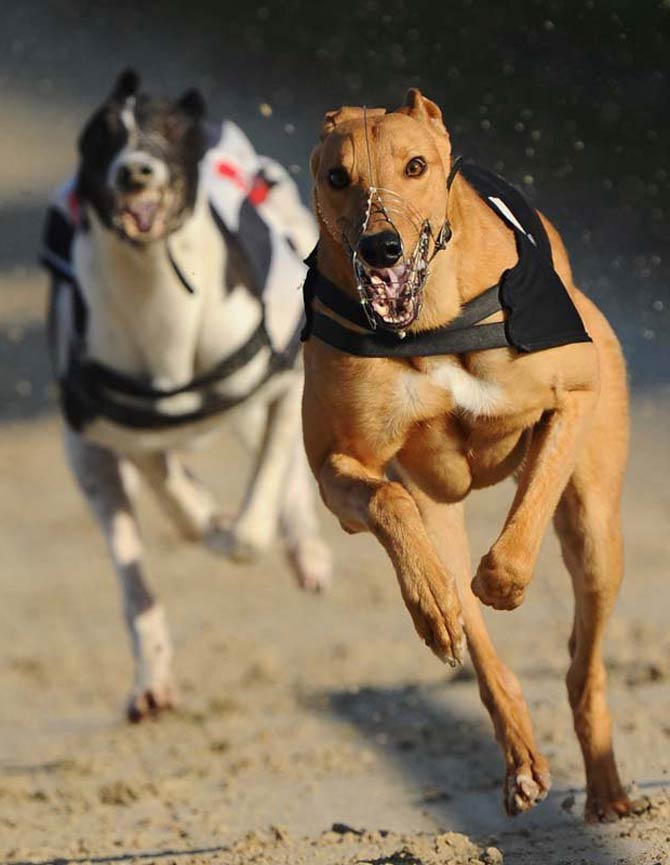
History of the breed
Many cynologists believe that Greyhounds come from the Middle East, specifically Egypt. This is evidenced by the wall drawings in Egyptian tombs from the 4th millennium, which show images of dogs very similar to modern Greyhounds.
Over the centuries, the breed has spread throughout Europe; however, the current appearance was developed in Great Britain. It is known that modern racing Greyhounds are descendants of dogs that take part in hunting rodents (mainly hares), therefore they develop dizzying, almost cheetah speed.
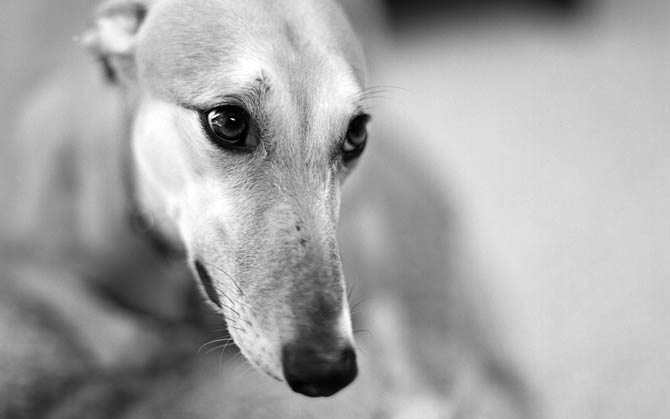
Characteristic
Appearance and anatomy
Greyhounds are characterized by a very short, easy to groom coat. There are about 30 classified color varieties within the breed. Therefore, we meet white, brindle, fawn, red, blue, black and even multi-colored Greyhounds. The skull and head are elongated; the muzzle appears very long in relation to its width.
The ears are shaped like a rose petal, they are delicate to the touch, while the eyes exude an intelligent look, they are shiny, oval and slightly oblique. The neck is long and muscular, giving the dog an elegant appearance. On the back of the slim but strong body, we can see a long, slightly curved, low-set tail, and the thickest at the base, tapering towards the end.
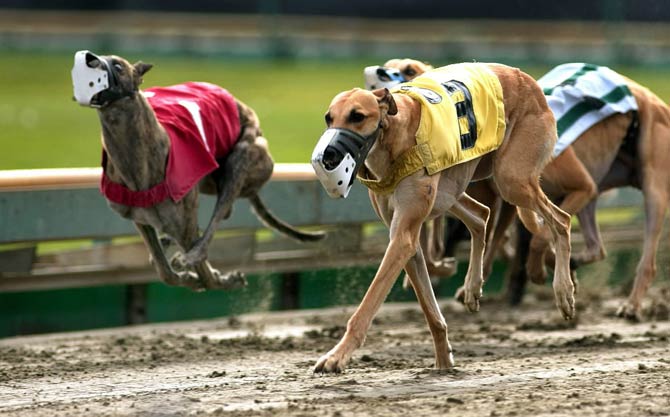
Greyhound – the fastest dog in the world
The secret of the Greyhound’s speed
The Greyhound can develop tremendous speeds thanks to its anatomical structure: light but muscular body, large heart (Greyhounds have the most heartbeats per minute), gait (while running, all limbs break off the ground at a given point in time) and an incredibly flexible spine.
Greyhound performance
- During the race, Greyhounds achieve an average speed of 64 km/h (40 mph)
- Within 30 meters (98 ft) after exiting the starting blocks, the Greyhound reaches a speed of 70 km/h (43 mph)
- In the first 250 meters (820 ft), the Greyhound travels 20 meters every second (66 ft/s)
- The maximum speed achieved by a Greyhound is 74 km/h (46 mph) – The fastest animals in the world.
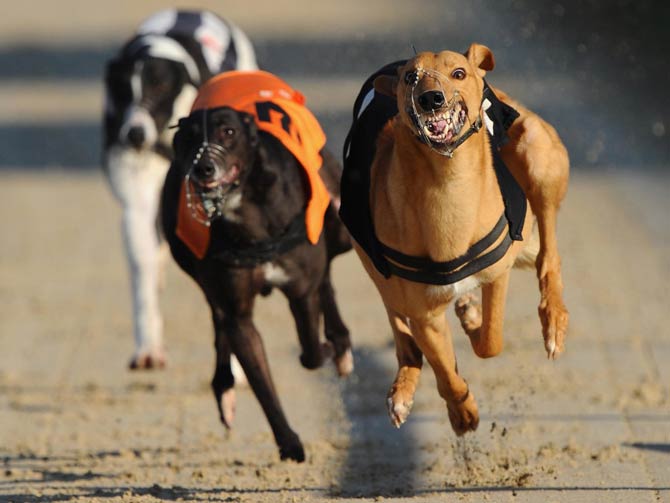
Temperament
The Greyhound shows no aggression, though an inexperienced observer might be scared by him especially if he sees it in a muzzle. However, this equipment is not used as a defense against attack, but as protection of the mouth from injury during the race – often competing Greyhounds trample or trip over each other, injuring the snout severely.
Some owners even muzzle their Greyhounds outside the racetrack, because they know that Greyhounds tend to chase small animals and catch them in the teeth.
Myths
Contrary to popular belief, the Greyhound does not need too much physical effort during the day, it is adapted to sprint, not marathon. However, puppies that have not been taught to deal with energy, may suffer from hyperactivity and display destructive behavior. The Greyhound is therefore a rather demanding breed.
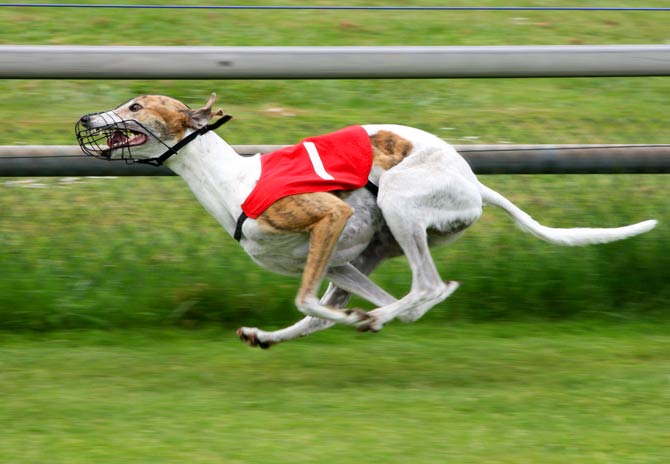
A wonderful companion
As a pet, it can make a wonderful companion. The Greyhound is a quiet, gentle and loyal breed. They love their owners very much, the company of people and animals, although it depends on individual preferences. Left unattended and unaccompanied, they may develop separation anxiety. Usually it is a good idea to adopt a second Greyhound. It may bark from time to time, but is generally not a loud dog, so it will do well in the suburbs.
More myths
It is not true that Greyhounds are hyperactive dogs, on the contrary – they do not require a lot of space and sleep up to 18 hours a day. As such, the breed may be better suited to be a pet than smaller but more mobile breeds.
Interestingly, on some racetracks Greyhounds have large sleeping boxes, because many of them do not know any other life than the one in the crate. Retired dogs are therefore very calm within the family.
It is recommended that owners of sighthounds (including Greyhounds) always take them out on a leash, they should only stay indoors without it. The reason for this is a very strong tendency to develop tremendous speeds in open space, combined with the lack of a chosen direction and target for the run.
It is also important that the Greyhound be allowed to run once a week in a place that is safe for it. Due to the relatively large size and strength, it is recommended that the fence surrounding the plot is 1.2-2 m high; a lower fence the dog would be able to jump over.
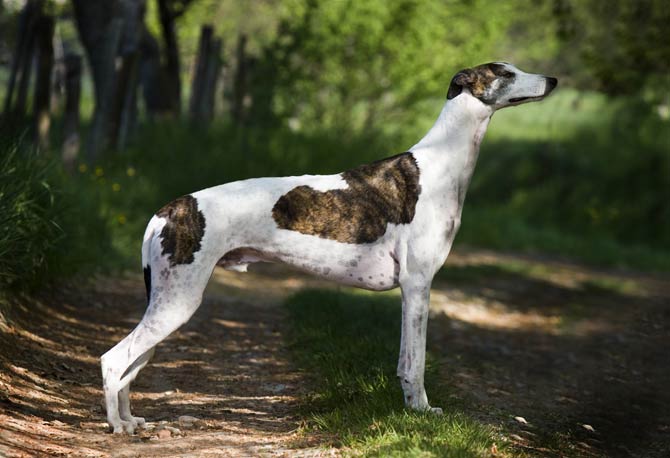
Health condition
This breed is usually in good health and longevity, and it is not affected by genetic diseases. Some individuals may develop achalasia of the esophagus, osteosarcoma and gastric torsion.
The dog should not sleep on hard ground – because it is very slim, the lack of a soft blanket can result in skin ulcers. Sighthounds do not metabolize barbiturates (anesthetic and anesthetic substances), so veterinarians should not use drugs based on these chemical compounds. Greyhounds exhibit remarkable blood chemistry (more red blood cells transporting more oxygen to the muscles and lungs), so many inexperienced vets can misdiagnose.
The skin is very sensitive to insecticides, so you should not use sprays, lotions or anti-flea collars. However, several products on the market are safe for the delicate skin of Greyhounds and are effective in eliminating fleas or ticks.
Lack of undercoat and subcutaneous fat exposes Greyhounds to extreme temperatures (both low and high). Therefore, they should stay indoors when the outside temperature is too high or too low.

Detailed data / dimensions (size)
Greyhound
- Height at the withers:
- males 71-76 cm (28-30 in)
- females 68-71 cm (27-28 in)
- Weight:
- males: 27-40 kg (60-88 lb)
- females: 27-34 kg (55-75 lb)
- Lifespan: 9-11 years
- Number of puppies: 1-12
- Max speed: 74 km/h (46 mph)
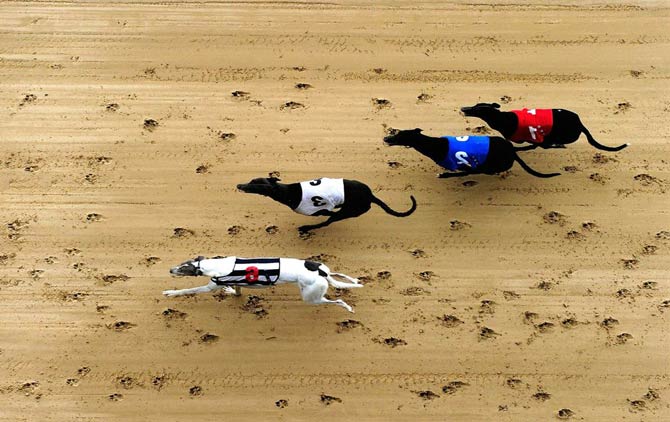
Greyhound – interesting facts
- It is commonly believed that the name Greyhound comes from the Old English word “grighund”. “Hund” is a word for hound/dog then, but the meaning of “grig” has not been explained to this day. According to Julius Pokorny, the Greyhound certainly does not mean “grey dog/hound”, but “good / honest dog”.
- The Greyhound is very fit even after amputation of a limb.
- Greyhounds take part in dog races called Coursing, where animals chase a dummy of small prey.
- The highest recorded speed of the Greyhound was 74 km/h (46 mph) – The fastest animals in the world.
- For centuries, sighthounds and other Greyhounds have been popular and recognized among hunters as their most elegant and noble companions among the dog world.
- Veterinarians often use Greyhounds as universal blood donors.

Recommended
- The smartest dogs
- The tallest dogs
- The most aggressive dogs
- The oldest dogs
- Pets
- Dogs
- Cats
- Wild cats
- The fastest animals
- The fastest birds
- The largest eagles







